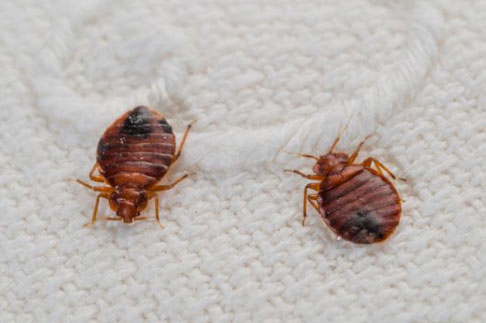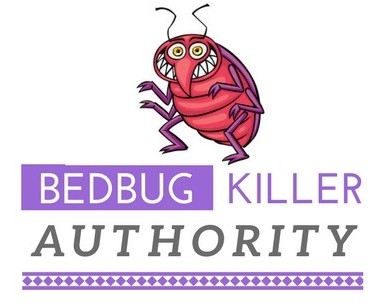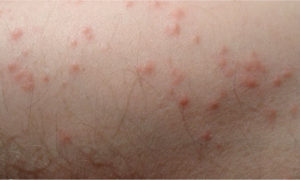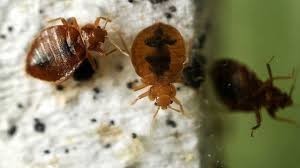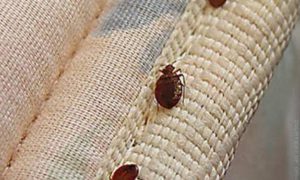Bed Bug Killer Authority – Do you know what bed bugs are? You know from the saying “don’t let the bed bugs bites”. Bugs that always sneak out of our beds, clothes, and other household environment. Then they wait for us to be asleep to crawl on us and then get our blood. Doesn’t get any scarier than that, huh? So, how long can a bed bug live without eating or having a blood meal?
In this post we will explain how long bed bugs can live without a blood meal but, first we must know what they are.
Bed bugs belong to the Cimicidae family. This family is composed of more than 100 species that feed on the blood of birds and mammals.
Two species live exclusively off humans: Cimex lectularius, which lives mainly in temperate zones, and C. hemipterus (F.), which is mainly found in tropical areas.
Before eating, bed bugs are brown or yellowish brown. Once they have fed on blood, they become reddish brown and resemble small apple seeds. Their heads include highly specialized piercing-sucking mouthparts. Generally, the tip of the male’s abdomen is pointed and the tip of the female’s abdomen is rounded.
Bed bugs are hematophagous insects, meaning they feed on blood exclusively. They generally take blood at night in just 10 minutes. They then hide near their host for a week or two before feeding again. It is believed through studies that the CO2 we exhale attracts bed bugs. More likely, they sense the body heat of their host.
Bed bugs are part of the food chain of several species. Its predators are rats, certain arthropods and insects such as ants and masked hunters (of the assassin bug family).
Life cycle
Bed bugs are one of the most common pests in households. Being able to survive without having a blood meal for up to 14 months is one of their best characteristics. There are different stages bed bugs need to undergo to reach adulthood. Once reaching maturity, bed bugs will start to reproduce a new generation. They will become nonstop egg producing machines, as long as they can get a blood meal. An infestation from a single pregnant female can rise to thousands of bed bugs within 6 months.
A household bed bug’s life depends on its age. The younger the bed bug, the more likely it will die sooner if not being able to feed on its host. It’s also dependent on whether the bug is resistant to pesticides and temperature range.
The average lifespan of adult bed bugs is between 10 and 12 months. Their have been some studies done that have bed bugs live up to 18 months. Their lifespan increases at lower temperatures. The cooler the climate, the more likely a bed bug can survive without feeding. A newly hatched bed bug nymph can survive weeks without feeding. At 27°C, C. lectularius lives an average of 65 days, but at 10°C, the insect can live as long as 413 days.
In an unheated space without food, bed bugs will live even longer than when their living conditions are optimal.
Before mating, bed bugs must feed on blood so that eggs can mature for females and males can produce spermatozoa. Mating is unusual in that the male does not inseminate the female through her genital opening. Instead, he pierces his partner’s abdomen using his genital parts and then injects sperm directly into her reproductive system. Mating injuries reduce the female’s life span by 30% ( thank God for that, huh).
The mating process is so traumatic to the female due to the wound, that with the leakage of blood, it increases the risk of infection. Thus, reducing the lifespan of the female. After the traumatic event, the female bed bug isolates herself away from the harborage and this is what makes the spread elsewhere because, they will avoid mating in order to protect themselves form all the damage this causes them.
Over the course of her life, the female will mate an average of five times. Females can carry sperm and produce eggs for 4 to 6 weeks, increasing the chances that the bed bug you bring home is capable of creating a huge infestation.
A female lays about 3 eggs a day, forming clusters of 10 to 50 eggs, often in combination with other females, and attaches them to her living environment: a window sill, grooves in the floor or in a piece of furniture, a cardboard box. She can lay between 200 and 500 eggs over the course of her life. Without food, she stops laying eggs after about 14 days. At a temperature of 86 degrees, eggs hatch after about two weeks. They are whitish and measure about 1 mm long.
Bed bugs undergo incomplete metamorphosis. At each of its five larval stages, it needs at least one meal of blood to go on to the next stage. First-stage larvae are 1 to 1.5 mm long, while fifth-stage larvae are 4.5 mm long on average. The insect’s rate of development increases with the temperature.
Stages Of Bed Bugs
1. Eggs
The egg of a household bed bug is a grain-like and milky white in colour. A female bed bug can lay between one to five eggs each day and up to 500 eggs within one lifetime. The eggs can be laid singly or in cluster and are usually place within tight cracks and crevices.
The size of an egg is about 1 mm in length, usually comparable to two grains of salt. The eggs will hatch in 6 to 17 days and Nymphs will start to feed within 2 weeks after birth. Development time from egg to adult is greatly affected by temperature. At 86 degrees, it takes about 21 days for an egg to hatch, go through nymphal development and reach adulthood. At 65 degrees, the process may take about 120 days.
2. Nymphs
Nymphs or young bed bugs will pass through five times of moulting before entering adulthood. It is important to know that nymphs require a blood meal in order to molt and reach the next level of development. They are smaller in size and are not capable of reproduction. Nymphs are yellow-white to reddish-brown in colour. Within five weeks, the nymphs become adults.
Nymphs grow about half a millimeter with each feeding subsequent morph. They start quite small, about the size of a sesame seed, and range in size from 1.5 MM to 4.5 MM. While they do need a blood meal in order to advance to their next stage, it doesn’t mean they will die. At this stage they can live for months without a meal
3. Adults
Bed bugs often make weekly feedings. They are sexually mature and are capable of producing eggs. Adult bed bugs usually live 4 to 6 months under the right conditions and can live up to 14 months without having to have a blood meal.
Bed bugs usually live in small groups and spend their days hidden in the cracks and crevices of a house. They can also be found on furniture, mattresses, door frames, window sills, pictures and light switches.
Prevention
The best weapons for keeping bed bugs away are information and prevention. Here are some possible solutions:
- Examine anything that comes into your home meticulously. When in doubt, don’t bring it inside.
- Avoid buying used mattresses.
- Carefully inspect second-hand furniture, clothing and books.
- Caulk any cracks and crevices in the walls and floor as well as the holes where plumbing and wires go through the wall.
- Remember that public areas (hotels, homes, hospitals, movie theatres, airports, train stations, buses and taxis) can be temporary refuges for bed bugs. They can hide in clothing, luggage and personal effects and be transported from one place to another without being noticed.
- Check your luggage when you return from a trip. If necessary, clean your luggage using a vacuum cleaner (dispose of the vacuum cleaner bag just afterwards, placing it in a sealed plastic bag).
Detection
Bed bugs are nocturnal and it is rare to see them in open areas during the daytime. Here’s how you can tell if there are bed bugs in your home:
- Look for immature stages of the insect as well as adults. Piles of yellowish eggs or larval skins(dry, translucent envelopes left behind after moulting) are indicators of their presence.
- Bed bugs are lucifugous (afraid of light), so a high-intensity flashlight can scare them out of their hiding places. When they come out, vacuum them up.
- Adult bed bugs are often associated with an unusual odour that reminds some people of fresh raspberries. Other people perceive it as a sickly sweet smell.
- In places where bed bugs are found, there are usually small, reddish stains that may be dry or viscous. This is blood that has been regurgitated by adult bed bugs.
What You Need To Know
Considering bedbugs’ behaviour, their odorous glands and the fact that they seek out communal shelter, it is likely that they have a complex system of communication. The chemistry and mechanisms of this system are still little known, but we know that bedbugs produce an aggregation pheromone (an odorous substance which causes them to gather together) and an alarm pheromone that warns other bedbugs of immediate danger.
It can be a major headache to discover you have bed bugs in your home, but it is best to act quickly and start with treatment as soon as possible. Before you know it, you will be rid of the pests and can finally get a good night’s sleep once again. Remember that they will not leave on their own.
Thanks For Reading,



